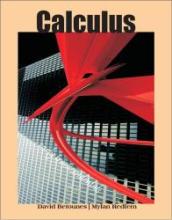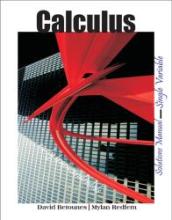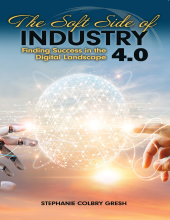Search Results: 1 - 10 of 8036
display
Calculus
Author(s): Mylan Redfern Betounes, David Betounes
NOTE: This version of the authors’ calculus book was previously titled: “Calculus: Concepts & Calculations-Non-CAS Version.” The book presents the essential calculus material using a traditional approach and organization of the canonical collection of concepts. The writing style is clear and con...Calculus with Maple
Author(s): David Betounes, Mylan Redfern
NOTE: This version of the authors’ calculus book was previously titled: “Calculus: Concepts & Calculations.” It is identical to the authors’ present title: Calculus, but has in addition the Maple code and Special-Purpose Maple procedures to produce the animations and figures that are an essential dy...Calculus Single Variable Solutions Manual
Author(s): Mylan Redfern, David Betounes
This Solutions Manual was written completely by the Authors. This means that it has the same problem- solving format as the textbook and, unlike other solutions manuals, provides more details, more steps toward the solutions, and more commentary and background. The figures and graphics are first-rat...Calculus Multivariable Solutions Manual
Author(s): Mylan Redfern Betounes, David Betounes
This Solutions Manual was written completely by the Authors. This means that it has the same problem- solving format as the textbook and, unlike other solutions manuals, provides more details, more steps toward the solutions, and more commentary and background. The figures and graphics are first-rat...The Soft Side of Industry 4.0: Finding Success in the Digital Landscape
Author(s): Stephanie Gresh
Automation makes life easier by doing repetitive tasks faster and more accurately. But as we embrace automation, we must also adapt. The future workforce will be more automated, impacting more jobs than ever before. So, what’s next for those replaced by automation? The answer lies in developing esse...Professional Catering: The Modern Caterer's Complete Guide to Success
Author(s): Stephen Shiring, Elizabeth J. Shiring
Professional Catering structurally applies by design key essential and emerging management, marketing, strategic management, and supply chain concepts empowering the student, practitioner, event planner, chef, or aspiring entrepreneur with the appropriate knowledge, tools, and Tips from the Trade to...Integrated Marketing Communication: A Consumer-Centric Approach for the Digital Era
Author(s): Thomas R. Flynn, James R. Smith, Michael Walsh
New Second Edition Now Available!There is a newer set of marketplace realities. The 2025—2034 decade is primed to become the most extraordinary era in marketing communication history. The consumer environment is filled with cultural, economic, political, and social turbulence. AI marketing, and comm...about product
A Constant Struggle: Documents and Readings in African American History to 1865, Volume 1
Author(s): Yohuru R Williams, Tamara Brown, Dr. Roger Davidson
A Constant Struggle: Documents and Readings in African American History volumes provide essential primary source documents and informative essays for the study of African American history from its African origins to contemporary times. The volumes assist in building critical thinking skills for the ...about product
A Criminological Guide and Theoretical Analysis of Serial Killers and Infamous Murders
Author(s): Michael Birzer, Robert Holland
Much of the general public’s knowledge of serial killers is a product of sensationalized and stereotypical presentations in the media. It’s time to break free of what we think we know and draw our information from factual analysis.Serial Killers provides an interdisciplinary approach to the study of...about product
Thriving in High School and Beyond: Strategies for Academic Success & Personal Development
Author(s): Joseph B Cuseo, Aaron Thompson, Shane Shope, John Roush
Thriving in High School and Beyond: Strategies for Academic Success & Personal Development Equips students with a comprehensive set of specific, action-based strategies that identifies what to do to succeed in high school and beyond, accompanied by compelling reasons why to do itFocuses on the stude...








